Day of the Dead in Mexico
México » Traditions » Day of the Dead
About the DAY OF THE DEAD in MEXICO
The festival of the Day of the Dead in Mexico is a very old festivity that dates back to the indigenous vision of death. The celebration takes place on the night of November 2 of each year.
The celebration consists of gathering the objects that the dead used in life and their favorite food, as well as flowers to make a path that guides the deceased towards their offering, candles or candlesticks on an altar. In addition to the Pan de Muerto and the sugar skulls.
Any visitor who comes to see the offering is treated to food that people offer on their behalf (who have passed away), in the belief that if they give, they will receive more in the future through the intercession of their faithful departed.
HISTORY OF THE DAY OF THE DEAD
The Pre-Hispanic Origin
The origin of the Day of the Dead dates back to the traditions of the pre-Hispanic peoples of Mexico and their way of understanding the world. In the Nahua, Mayan, Zapotec and Mixtec regions, as in all of Mesoamerica, the idea that death is a natural process that consists of leaving this earthly plane and moving to another region of the universe gave shape to different beliefs and celebrations, focused both on the path of the deceased through the underworld, as in the worship of the gods who guard the space beyond life.
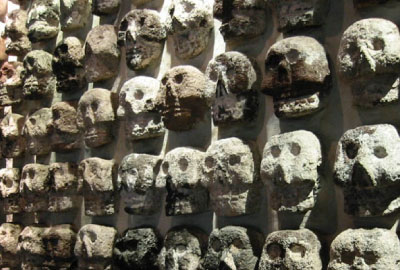
Unlike the Christian notion, pre-Hispanic cultures considered that the ultimate destiny of any person after death did not depend on their morals and behavior, but on the way in which they had died.
In the Nahua worldview, those who died of natural causes went to Mictlán: the underworld and one of the vertical planes of the Universe made up of nine dimensions, the same ones that any deceased person had to go through to reach their final destination. In the Mayan culture, the Mictlán receives the name of Xibalbá and in both it is necessary to cross an underground river with a xoloitzcuintle, in addition to freeing different levels.
The Day of the Dead after the Conquest
With the syncretism between the western culture of the conquerors and the pre-Hispanic thought of ancient cultures, the tradition of honoring the dead in Mexico took its first steps to become what we now call Day of the Dead.
The Christian tradition of All Saints’ Day (originally celebrated on November 1) adopted elements of the rituals and death cult of the Nahua, Maya, Zapotec and Mixtec peoples, resulting in a heterogeneous celebration whose protagonist is the memory of the dead and is celebrated in different ways in each region of the country.
The Day of the Dead in modern Mexico
Literary skulls emerged in the late 19th century and quickly gained fame as a popular and ironic critique. After the end of the Mexican Revolution, the Day of the Dead was consolidated as an official celebration and was promoted as a tradition that strengthened the nationalist and identity values of post-revolutionary projects.
The story of “La Catrina”, a Mexican icon of the Day of the Dead
One of the most recent elements of the celebration is La Catrina, the character of José Guadalupe Posada captured by Diego Rivera in the mural Dream of a Sunday Afternoon in the Alameda Central (1947) and that since then has appeared in engravings, costumes and other manifestations related to the Day of the Dead.
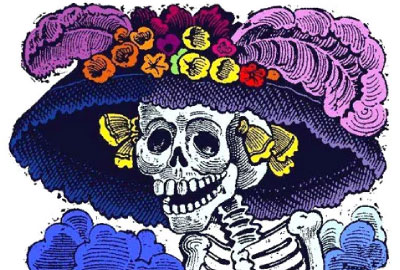
La Catrina has become the quintessential image of the Day of the Dead celebration in our country and an international representative of Mexican culture. Her skull-shaped figure has been part of popular history since 1910, when satirical writings known as “calaveritas” were popularized, criticizing both the situation in the country and the socialite.
In these publications, elegant and well-dressed male skeletons -known as catrín- appeared, accompanied by a lady with the same characteristics, which is why they began to be referred to as catrinas; this style was a classic image of the Mexican aristocracy of the late nineteenth and early twentieth centuries.
José Guadalupe Posada illustrator, engraver and caricaturist originally from Aguascalientes, created “La Calavera Garbancera”, a drawing that aimed to criticize women who achieved high social status and hid their roots to follow European fashions and customs. The name came from the chickpea sellers, who, being poor, sought to appear rich and hide their indigenous roots.
“La Calavera Garbancera” is illustrated from the chest up, wearing nothing more than a pompous hat and a happy smile on his face. Posadas did not miss the opportunity to distinguish the origins of his satire by drawing bows behind the ears as they used to wear the domestic workers.
ALTAR OF THE DEAD
Offerings on the day of the dead
The offering is a way of saying that the memory of loved ones occupies a sacred place. Each of the materials that make up an altar has a special meaning in the Mexican tradition.
The altar stands on a table covered with an embroidered or frayed tablecloth, two reed arches adorned with china paper flowers; this set is called the cover or altarpiece. The bread of the dead is in the form of the deceased and bears a name. It is also adorned with an abundance of zempoaxochitl flowers. Curtains and shredded china paper folders are placed. On the altar of the dead, a candle is lit for each person, calling them by their name when they are lit. Offerings are placed on both sides, they prepare chocolate, atole and other dishes.
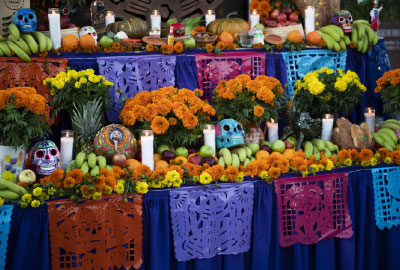
Altars are a tradition that is part of the Day of the Dead in Mexico, to honor our deceased loved ones. which consists of placing offerings to honor deceased loved ones. Altars are one of the most deeply rooted traditions within the celebration of the Day of the Dead from October 31 to November 2 in Mexico
This tradition considered as Intangible Cultural Heritage of Humanity by UNESCO, consists of placing offerings to honor our deceased loved ones, whose origin dates back to pre-Hispanic cultures.
For this reason, food, candles, flowers and everyday objects of the deceased are placed on the altars, with the intention of once again sharing a moment with them and enjoying their favorite food and drinks.
Skull.
Origin of the Altars
The origin of the altars of the dead is prior to the Spanish conquest, since, within pre-Hispanic cultures, the act of dying was the beginning of a four-day journey to Mictlán or the underworld, for which the dead were buried with everyday objects that they might need during the trip.
Upon arrival at their destination, the traveler offered gifts to the lords of Mictlán, who sent him to one of nine regions, where the dead man remained for a trial period of four years before continuing his life and thus reaching the top floor, which was the place of his eternal rest.
However, after the arrival of the Spanish in the 16th century, the terror of death and hell was introduced to Mexico with the spread of Christianity, so the tradition of altars for the dead represents the cultural syncretism of the old and the new world, since both contributed elements that are used today.
The levels of the altars
The altar of the dead is made up of different levels that represent the material and immaterial world, as well as the different levels that the soul of the deceased must cross to reach eternal rest.
Thus, two-tier altars are a representation of heaven and earth, while three-tier altars represent heaven, earth, and the underworld. Also, there are altars of seven levels, which represent the seven levels of purgatory that the soul must go through in order to reach rest or spiritual peace.
Elements of the Altar of the Dead
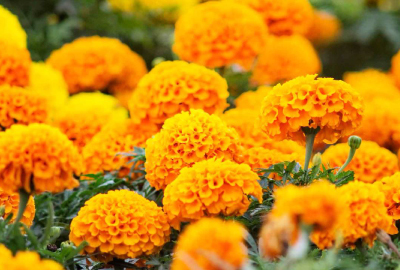
Each of the elements of the altar of the dead fulfills a function. Currently, the altars of the dead have different elements, which fulfill a specific function within the offering.
Some of the most common are:
Cempasúchil flowers
These flowers are representative of the Day of the Dead and are used to decorate and flavor the place during the soul’s stay.
The typical flower of the Day of the Dead is the “tagetes erecta” species, popularly known as cempasuchil. This species native to Mexico and Central America has been used for thousands of years as a decorative element in different celebrations and rituals, because pre-Hispanic cultures considered that its petals possessed the different shades of the Sun.
For a few decades, cempasúchil has become the protagonist of the Day of the Dead in Mexico and its color and aroma floods markets, offerings, streets and avenues during the first days of November. The tall cempasúchil variety is stripped in the offerings and on the ground, while the smaller specimens are sold in pots to accompany offerings and decorate during the season.
Symbol of the radiance of the sun that was considered the origin of everything. Each flower represents a life and, in the case of the deceased, it means that he still has a place within the whole. For this reason, it is used to form a path that guides him to his offering.
Candles and candlesticks
These serve as a guide so that the souls can reach their old places and illuminate the return to their home, so they are sometimes placed in the shape of a cross to represent the four cardinal points.
Skulls
Sugar skulls are another essential element in any offering. Of different sizes and shapes, they are decorated with seeds, metallic paper and labels that can bear both the name of the deceased, as well as other living acquaintances as part of the tradition. Around are placed fruits, crafts and food.
skulls
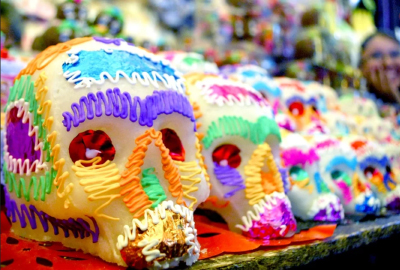
Skulls (Calaveras) are used as a symbol of celebration on the day of the dead. There are several types: The decorated sugar ones that bear the names of well-known people. Cardboard skulls painted and dressed, representing some moment of everyday life. And, the most famous, the “Calaveras” in verse, written in octosyllables.
Salt
It is the element of purification, it serves so that the body does not become corrupted, on its round trip for the following year.
Cross of ashes
This serves to purify the spirit of the dead of the guilt pending from him.
Copal or incense
Copal was offered by the indigenous people to their gods since incense was not yet known, it arrived with the Spaniards. It is used to ward off evil spirits and to purify the environment.
Water, food and drinks
Water is offered to the souls to quench their thirst after their long journey and to strengthen their return. Likewise, their favorite dishes, foods and drinks are placed, to delight the soul that visits us.
The bread of the dead and sugar skulls: The bread of the dead is one of the most traditional foods of this celebration, which represents the cycle of life and death, while the sugar skulls represent human skulls.
Bread of the Dead
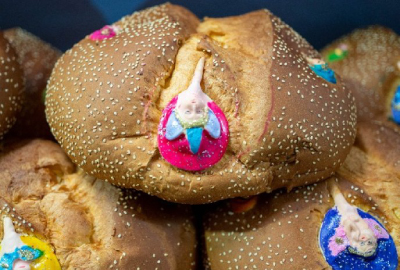
The bread of the dead is a gastronomic tradition that has several centuries in the country. Today it has already earned a place in the offerings that are placed on the altars. The recipe is simple: flour, egg, butter, water, a touch of orange and slow fermentation, to guarantee the characteristic fluffiness of the piece. The bread is round in shape, to symbolize a tomb; the core, at the top, represents the base of the skull, and the lateral ornaments, the bones of the extremities.
Portrait of the deceased
The portrait of the remembered relative suggests the soul that he will visit us, so it should be placed on the highest level of the altar.
Piked paper
The purple piked paper represents Christian mourning, while the orange one represents Aztec mourning. Currently, commercial piked paper includes a variety of colors and designs based on the Catrina cartoons.
Xoloitzcuintle
These pre-Hispanic puppies cannot be missing in the altars dedicated to children, since they are a toy so that the souls of the little ones are happy to arrive at the banquet.
RECOMMENDED PLACES TO VISIT ON THE DAY OF THE DEAD
AGUASCALIENTES
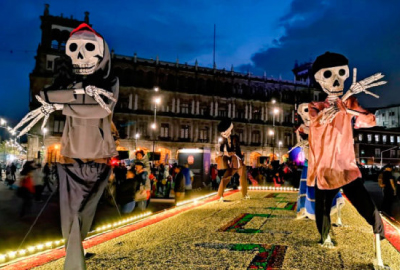
This is a place that you must visit par excellence, since the creator of the Catrina, José Guadalupe Posada, was born there; That is why the Skull Festival is celebrated in this destination on the Island of San Marcos. At the end of October and the beginning of November, Aguascalientes is filled with exhibitions in museums, concerts and thematic pavilions.
So if you visit around these dates you will find the place full of paper figures alluding to the catrinas, offerings, legends in each neighborhood and even comedies in honor of death. An unmissable destination!
Regardless of where you decide to spend it, remember to prepare your offering with the food, photos and favorite drinks of your deceased. Light a candle awaiting your arrival and get ready for an unforgettable experience.
CAMPECHE
Hanal Pixán
The first of November celebrates the feast of All Saints, however, due to the outstanding syncretism, in this region it has been merged with the Hanal Pixán or “food of the souls” of the Mayan worldview. This festival acquires a magical symbolism of enormous appeal, both for locals and for strangers.
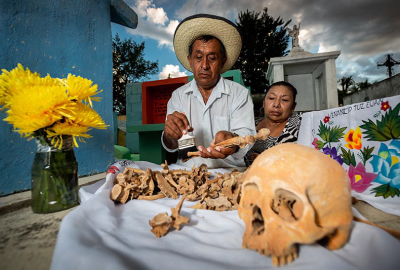
This is one of the most anticipated and respected festivals by the inhabitants of Campeche where families participate in different activities for the offering, which in rural areas is mixed with the best of what is obtained in the harvest.
It begins on October 31 with the arrival of the souls of the children or Chichán Pixán, to whom the first altar containing sweets and some toys is dedicated. November 1 is dedicated to deceased adults or Nohoch Pixán, who are offered their favorite foods and habits such as cigarettes, their favorite soft drink, etc. at the altar. All this accompanied by flowers and images of relatives and their candles to guide their course. And finally, on November 2, the altar is dedicated to all souls, those who have no one to remember them.
Pomuch
Pomuch, in Campeche, is without a doubt one of the most extraordinary places to celebrate the day of the dead. With a solemn and ritual ceremony, the inhabitants of this town remove the remains of their deceased and clean them with great care. They leave them almost white and put them back in their box.
It is important that each bone and vertebra return to its place. Later, they decorate the tombs with multi-colored flowers, cover the remains with embroidered and decorated blankets, and paint the place where their deceased lies.
This ritual can be carried out from October 26 to November 2. Since 2017 this tradition is considered Cultural Heritage of the State of Campeche.
If you go to this celebration, do not forget to be respectful of the traditions of the place. In addition, you must try the bread of the region, one of the most famous for its quality and flavor.
CDMX
San Andres Mixquic
One of the most recognized towns for its celebration of the Day of the Dead is San Andrés Mixquic, a place that is visited every year by tourists from all over who come to admire the festivity. In this place it is believed that, at sunset, the souls of the deceased enter and disperse throughout the town.
This could be the most visited place on these dates, where the traditional Alumbrada is performed, which consists of turning off all the lights and that the candles of the pantheon are the only light that exists throughout the night, while the inhabitants visit the tombs of their deceased relatives, clean
them and adorn with the typical elements of an altar of the dead. In addition, you can enjoy typical Mexican food, mariachi, band, trios and even a contest of cardboard skulls.
Xochimilco
Although there is no specific event for the big dates, during this season a night walk is customary in which you will visit the island of the dolls, you will meet “La Llorona” (the weeping woman) and perhaps you will be a little scared when listening to the legends that they are telling you during the tour.
Day of the Dead parade in CDMX
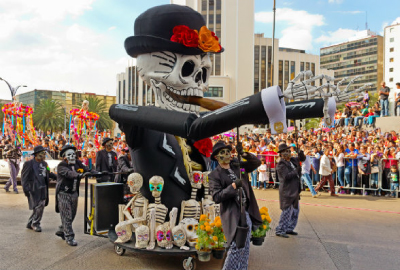
In just a few years, the CDMX Day of the Dead Parade has become a true capital tradition. Giant skulls and puppets, monumental balloons, catrinas and other characters from Mexican culture star in this spectacular event.
The first parade took place in 2016, inspired by scenes from Specter (2015), the James Bond movie whose production took place in Mexico City. In one scene of the film, there is an impressive Day of the Dead parade through the Plaza Manuel Tolsá in the Historic Center.
Although such a parade had never been done before, the scene made such an impression that it generated many expectations from tourists and locals to make it a reality. For the first edition, even original props from the film were used. Thus, the imagination of Hollywood screenwriters became one more tradition of the Day of the Dead.
ESTADO DE MEXICO
Teotihuacan
Generally on these dates the Chaman Festival is celebrated, where its main attractions are the nights of legends, offerings, massive lighting of candles and nightly display of hot air balloons. Also, activities such as painting workshops, clay, the traditional chopped paper, bread of the dead and ball game are carried out.
MICHOACÁN
Another place that is also famous internationally is the Island of Janitzio, in Lake Pátzcuaro, Michoacán. Here lit candles and flowers that float in the waters are placed on the lake.
Janitzio
The party begins on the island of Janitzio where the inhabitants prepare the food that will be placed on the altar of the dead. According to Purépecha traditions, the souls of the dead fly like monarch butterflies over Lake Pátzcuaro, where at nightfall, fishermen spread their butterfly nets and cross towards the Tzirumútaro pantheon, lighting the way with candles. When the procession arrives at the pantheon, the altars are placed on the tombs and the evening begins.
The small island of Michoacán dresses up to welcome you during the celebration of the Day of the Dead, as you will experience the traditional parade of canoes with butterfly nets, illuminated by candles while all the attendees sing and pray. Without a doubt, it is something that your eyes will hardly forget.
In the state of Michoacán there are various Day of the Dead celebrations, the most popular being those that take place in Pátzcuaro, Janitzio, Tzintzuntzan and Zirahuén.
MORELOS
One of the customs that can be highlighted on the Day of the Dead in the state of Morelos is the fact that in some populations, the inhabitants of the houses leave them to sleep in the doorway, so that the deceased have more space in the room where the offering is placed and they can enjoy the food.
The altars in Xoxocotla, the offering resembles a kind of bed, the base is woven with a bush called acajuali, banana leaves are placed on the fabric and the offering is placed on top. This altar is unique in the state of Morelos, it is used for children and adults.
OAXACA
While in Oaxaca, at the site of the deceased’s death, relatives make a cross of ashes on the ground and sprinkle it with holy water. Because of it it is a much visited attraction in the country.
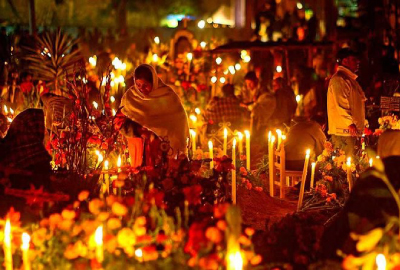
The muerteada, unlike the comparsa, takes place on dates established in this case on November 1 and 8, and the verses sung during this festival are different from those of the comparsa.
Finally, on the day of the dead, a mega festival is organized where the muerteada and the comparsa merge and culminate in the pantheon.
PUEBLA
The Day of the Dead celebration in Puebla is one of the most popular with local and foreign tourists. Some of the municipalities that celebrate the hardest are Atlixco, Chignahuapan, Huaquechula, Tochimilco and the capital that bears the same name as the state. In Atlixco, this 2021 will be the Valley of the catrinas with skulls five meters high.
In Huaquechula and Tochimilco there will be monumental offerings measuring up to five meters. In the capital there will be the Festival between the living and the dead. On the other hand, in Chignahuapan it will be the 25th anniversary of the Festival of Light and Life, a show that takes place in the middle of its lagoon.
SAN LUIS POTOSÍ
In Huasteca Potosina, a celebration called “Xantolo” is also held. During this celebration parades, dances and cultural activities are held in squares and pantheons.
On November 1, All Saints’ Day, the altars are veiled with prayers and praises throughout the night while the teenek (indigenous community of the region) accompany the participants with music and dance.
On November 2, the day of the faithful departed, the altars are taken to the pantheon to decorate the tombs.
VERACRUZ
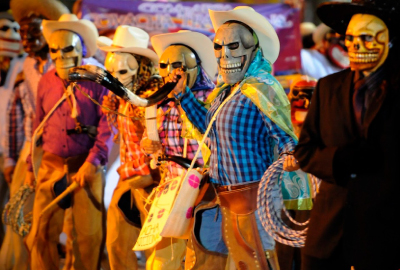
Throughout the state there are different traditions to celebrate the day of the dead, but the most famous is that of Tempoal, where the Xantolo takes place. The villagers gather in the main square to dance with the dead. The residents come out with costumes and wooden masks that evoke the devil, the grim reaper, the cowboy, clowns, animals of the region, big mouths or pregnant women that symbolize life.
These masks are used with the aim of cheating the death that is nearby. The (living) visitors are treated as deceased and the inhabitants offer them food, sweets and offerings that they cannot refuse or for which they must be thankful. The festival lasts three days in which the troupes play while the inhabitants enjoy the company of their loved ones who have passed away.
YUCATÁN
In Mérida, the Yucatecan capital, the celebration of the Day of the Dead has several connotations of the Mayan culture. Colloquially this celebration is known as Hanal Pixán. This celebration usually lasts 7 days and one of the most representative events is the “Paseo de las Ánimas” where the relatives of the deceased walk from the general cemetery to the arch of San Juan.
During these days, altars with traditional Yucatecan food are placed and placed on a white or black tablecloth, depending on the behavior that the deceased had in life.
More MEXICAN TRADITIONS
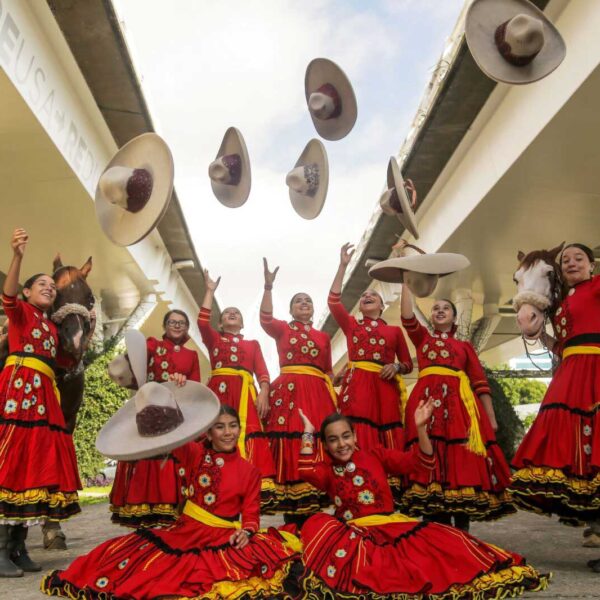
Traditions of Jalisco
Jalisco is full of surprises. A cosmopolitan metropolis modern, but authentic and traditional at the same time. Many of things which are typically associated with Mexico have their origins in Jalisco. These include rodeos called charreadas, mariachis, and of course the tequila.… Read More
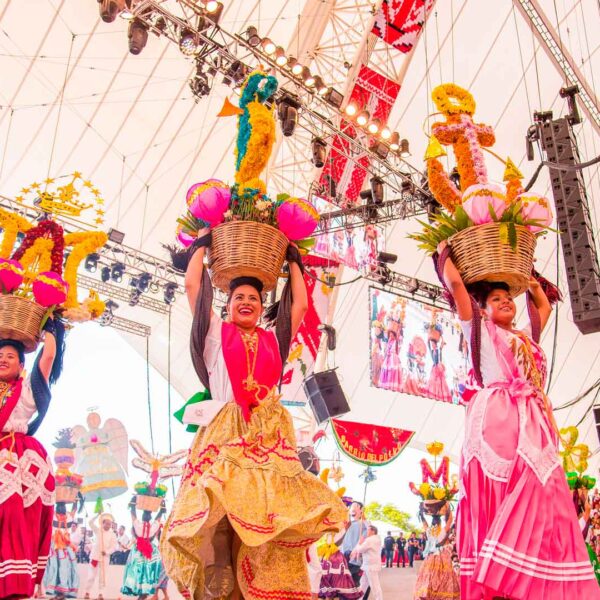
La Guelaguetza
The Guelaguetza is an ancient tradition with pre-Hispanic roots related to agricultural ceremonies of gratitude to the gods for the arrival of the rains and the lifting of the harvest at the end of July and is the largest festival in Oaxaca. La Guelaguetza is a celebration of gratitude for the arrival of the rains and the harvests, in which representatives from all regions of the state gather in the capital to share their culture through dances, crafts and food. La Guelaguetza is celebrated every year on the two Mondays after July 16, except when the first Monday is July 18, Benito Juárez’s death anniversary. Many types of dances also participate, such as the traditional Flor de Piña; where women usually dress in Huipiles representing the different regions of the state, as well as with their pineapple on their shoulders, they comb their hair with beautiful long braids accompanied by their ribbons and can not missing her accessories that is, bracelets, necklaces and earrings of precious colors and her beautiful makeup.… Read More
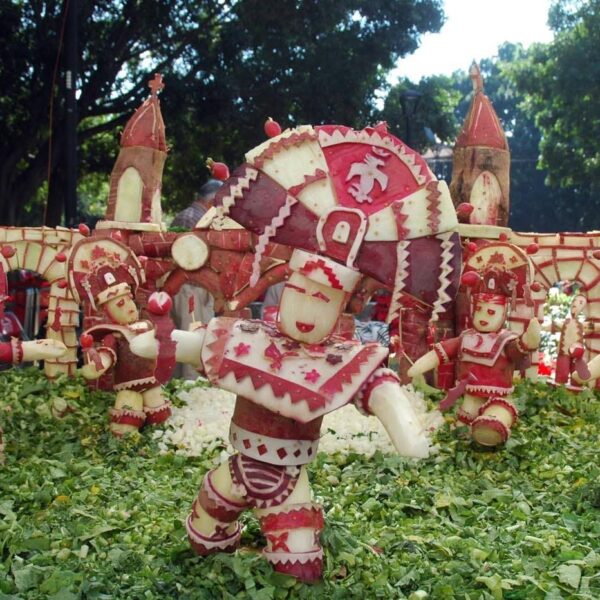
Traditions of Oaxaca
In the state of Oaxaca there are many customs and traditions throughout the year, and within the state, said that they have the same purpose of celebration but with different things, in fact from one region to another or even more from one town to another, the Customs vary for perhaps details but that is what makes them authentic. All the holidays are celebrated, the profane and the religious ones. The festival calendar is extensive due to the diversity of ethnic groups, which they still conserve. Oaxaca has a combination in its traditions of the culture of the ancestors and the current culture, a state that does not lose its customs, adapts them to new times and needs.… Read More
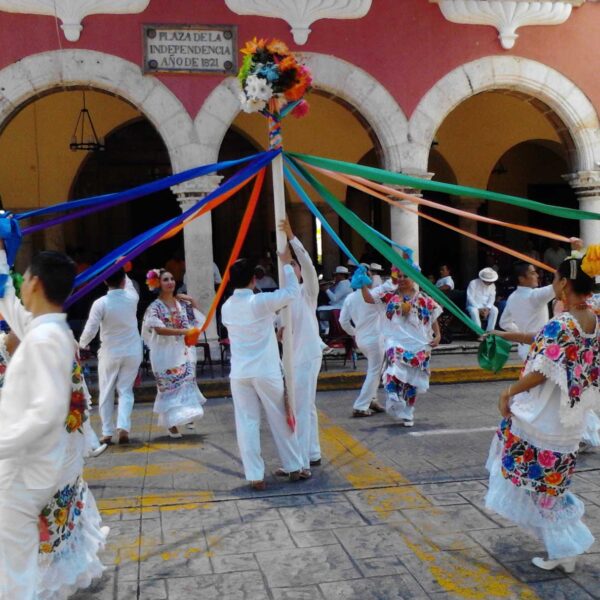
Traditions of Yucatan
The people from Yucatan integrate their beliefs, celebrations and ancient customs into their daily lives, and create a very special kind of magical syncretism. The handcrafts, the cuisine, the music, the folklore, and the traditions are irrefutable proof that Yucatan is a magic land with open, warm atmosphere, where visitors always feel welcome.… Read More
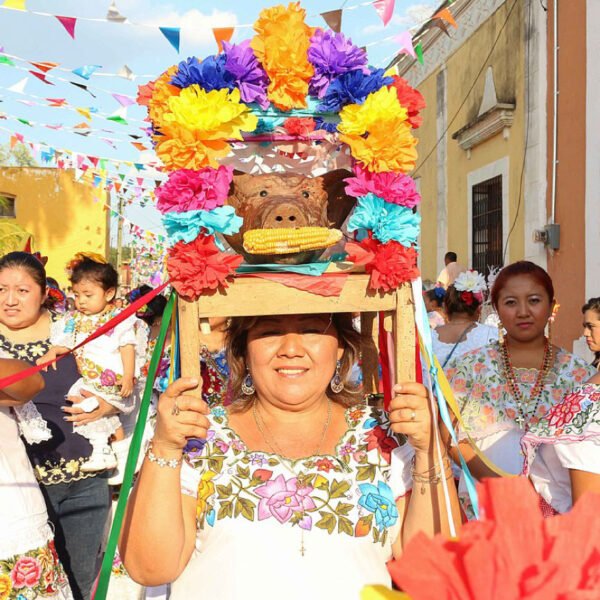
Traditions of Campeche
Campeche is without a doubt one of the most beautiful and traditional States of Mexico. Campeche is located in the southeast of Mexico and borders the states of Yucatan to the north, the state of Quintana Roo to the east, and the countries of Guatemala and Belize to the south. The capital of this State is called San Francisco de Campeche and it is also the city with the largest population in Campeche.… Read More
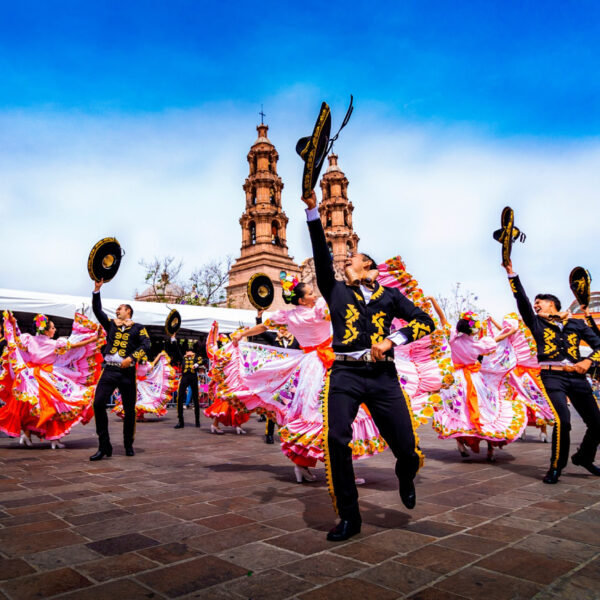
Traditions of Aguascalientes
Aguascalientes is a state of traditions and customs, a destination famous for its internationally recognized fairs and festivals; It is prepared to receive tourists and visitors throughout the year, some of its main tourist attractions are the San Marcos National Fair, the Skulls Cultural Festival, the Grape and Artisanal Cheese Fair.… Read More
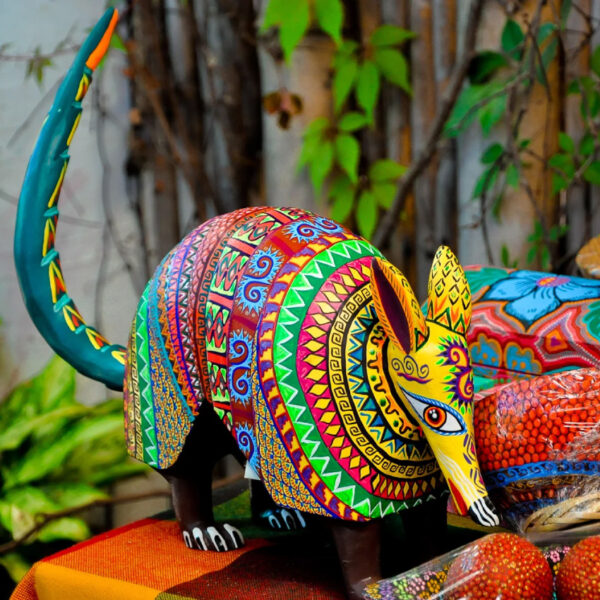
Handicrafts from Oaxaca
Handicrafts from Oaxaca are a great tradition and they offer a diversity that denotes the artistic richness and imagination of its people. The talented artisans of Oaxaca make beautiful pieces of clay, textiles, wood, metal, skins and other materials, forming a rich and varied folk art in both decorative and useful items.… Read More
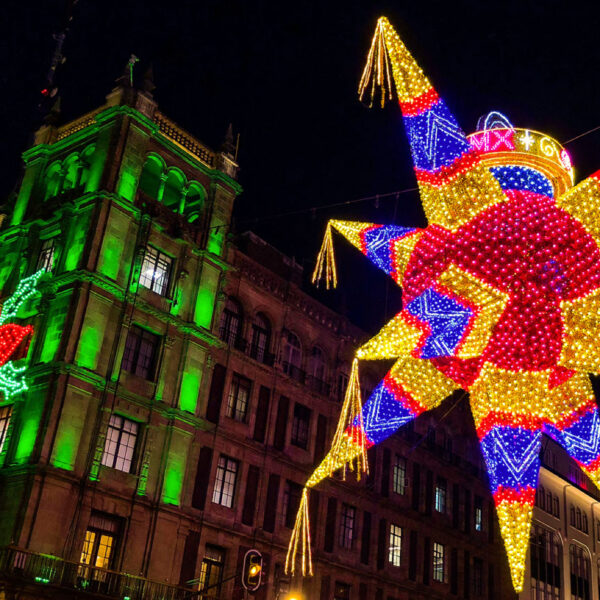
Christmas in Mexico
Christmas, celebrated on the 25th of December, is a time of joy, giving, and familial warmth. Rooted in the Christian faith, it marks the birth of Jesus Christ in Bethlehem, a significant event observed by various Christian denominations. Beyond religious observances, Christmas embodies values such as generosity, self-improvement, and the belief that collective efforts can bring about miracles, fostering positive changes in our surroundings.… Read More
DAY OF THE DEAD in MEXICO Guided Tours
Flights & Hotels in MEXICO
More Tourist Attractions in MEXICO

Archaeological Sites
The Archaeological Zones are the cultural past of every Mexican. You will be amazed at the ambient, nature and the environment that surrounds them. Climbing to the top or being around it will take us back in time to admire every detail. México is a country of culture and traditions, many of which we have inherited from the pre-Hispanic inhabitants of this vast territory, although it is true that there were more settlements in the central and southern part of the country, it is also possible to find some archaeological remains in the north.
… Read More

Capital Cities
Folklore, gastronomy, literary culture, art and exhibitions, is what you will find in the capitals of the states of Mexico. To the north, colonial Mexico, Puebla, Guadalajara, Guanajuato, the Sonoran desert and the California peninsula. To the east Veracruz and the gulf. To the west Acapulco, Oaxaca and Tuxtla Gutiérrez. And to the south the Riviera Maya and the pyramids of Chichén-Itzá, Tulúm and Cobá in Yucatán, Palenque in Chiapas, the cenotes, and the Central American jungles.… Read More

Magical Towns
A Magical Town is a place with symbols and legends, towns with history that in many cases have been the scene of transcendent events for our country, they are places that show the national identity in each of its corners, with a magic that emanates from its attractions ; visiting them is an opportunity to discover the charm of Mexico. The Magical Towns Program contributes to revalue a set of populations in the country that have always been in the collective imagination of the nation and that represent fresh and varied alternatives for national and foreign visitors. A town that through time and in the face of modernity, has conserved, valued and defended its historical, cultural and natural heritage; and manifests it in various expressions through its tangible and intangible heritage. A Magical Town is a town that has unique, symbolic attributes, authentic stories, transcendent events, everyday life, which means a great opportunity for tourist use, taking into account the motivations and needs of travelers.… Read More

Ecotourism and Adventure
Mexico is one of the best countries for Ecotourism as it has a great variety of flora and fauna, as well as a large number of refuges for extraordinary species. You can enjoy recreational activities of appreciation and knowledge of nature through contact with it, such as: stargazing, observation of natural attractions, wildlife and bird watching. Throughout México there are more than 176 protected natural areas, 5 of them considered by UNESCO as Natural Heritage of Humanity. Just for this and much more, we believe that Mexico is a Paradise for Ecotourism.… Read More

States Of Mexico
Mexico has an incredible diversity of landscapes, where the beauty of its beaches, internationally recognized, stands out. In its vast territory of coasts, there are beaches of unparalleled beauty, and colorful landscapes. A large network of first-class hotels and tourist services is available to visitors to these beaches. Mexico is also mystical places, dotted with archaeological testimonies inherited from its original inhabitants. Monuments made by the Mayas, Aztecs and Toltecs are located in magical landscapes, like lighthouses in an ocean of natural beauty. They offer visitors buildings that tell their history, and museums that collect their cultural heritage. And that keep alive ancestral traditions, in ceremonies and festivals, where you can enjoy cultural activities and entertainment.… Read More

Beaches
On the Beaches of Mexico you can immerse yourself in the intense blue ocean of the Pacific bays, sunbathe on the shore of the warm and transparent waves of the Caribbean Sea in Quintana Roo or even rest on the beautiful coasts of the Gulf of Mexico. Mexican beaches hide wonderful secrets for the traveler. By visiting them, in addition to enjoying the excellent climate and water activities, you can discover splendid archaeological sites and interesting colonial cities without traveling long distances.… Read More

Traditions in Mexico
It is practically impossible to make a meticulous, and above all, accurate selection of the places to visit in Mexico. Each place that our country houses is unique and beautiful in its own way. Mexico, with its nearly 2 million km², has a large number of scenarios to offer, as well as endless activities to do. Do not lose your way and enter the places to visit in Mexico. In Mexico, apart from the beaches and its famous archaeological sites, there are many other really interesting sites and activities that you should know. In the surroundings of the main cities you will find places full of culture and tradition, where you can spend relaxing, interesting and fun vacations. On your trip through Mexico you cannot stop obtaining souvenirs, the crafts that are made here are of the highest quality and recognized worldwide. A shopping tour cannot be missed.… Read More

Gastronomy
The Gastronomy of Mexico has a great diversity of typical dishes, which is why it was recognized by UNESCO as Intangible Heritage of Humanity. The basic and representative ingredients of Mexican dishes are: corn, coriander, chili, beans, piloncillo, nopal and tomato. Mexican cuisine is also characterized by its sauces, which serve as an accompaniment to traditional dishes, prepared based on spices.… Read More

